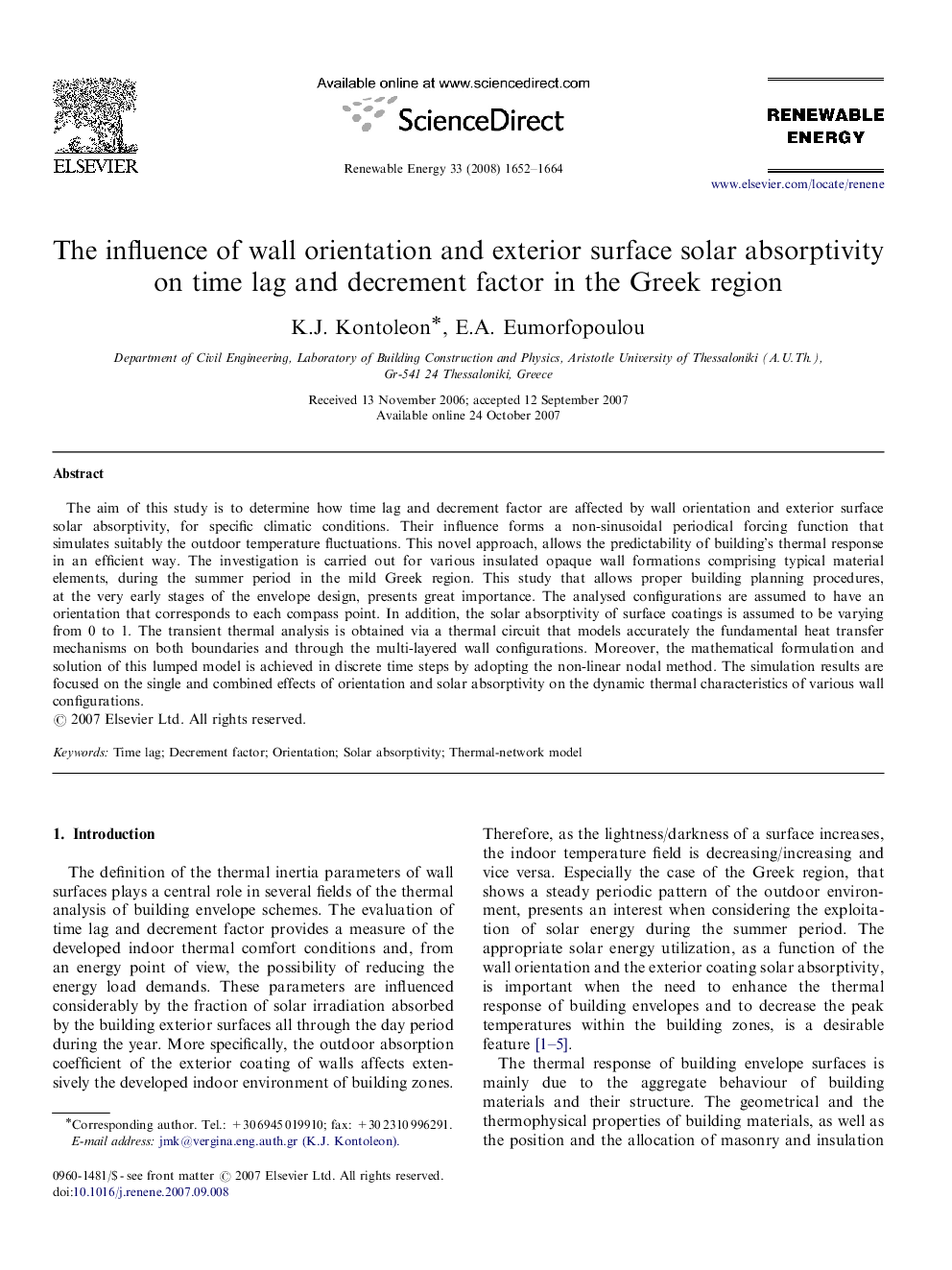| Article ID | Journal | Published Year | Pages | File Type |
|---|---|---|---|---|
| 302673 | Renewable Energy | 2008 | 13 Pages |
The aim of this study is to determine how time lag and decrement factor are affected by wall orientation and exterior surface solar absorptivity, for specific climatic conditions. Their influence forms a non-sinusoidal periodical forcing function that simulates suitably the outdoor temperature fluctuations. This novel approach, allows the predictability of building's thermal response in an efficient way. The investigation is carried out for various insulated opaque wall formations comprising typical material elements, during the summer period in the mild Greek region. This study that allows proper building planning procedures, at the very early stages of the envelope design, presents great importance. The analysed configurations are assumed to have an orientation that corresponds to each compass point. In addition, the solar absorptivity of surface coatings is assumed to be varying from 0 to 1. The transient thermal analysis is obtained via a thermal circuit that models accurately the fundamental heat transfer mechanisms on both boundaries and through the multi-layered wall configurations. Moreover, the mathematical formulation and solution of this lumped model is achieved in discrete time steps by adopting the non-linear nodal method. The simulation results are focused on the single and combined effects of orientation and solar absorptivity on the dynamic thermal characteristics of various wall configurations.
